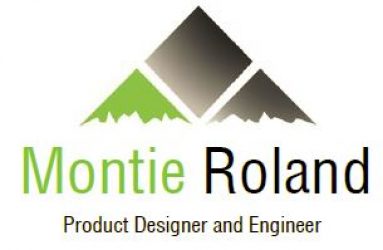“Integrating Consultants into a Well-Managed Design Process”
A Joint PDMA / TEC / ASME Event
Date: 25 Oct 06
Time: 6:00 PM – Pizza / Networking
6:30 PM – Keynote Speaker
7:00-8:30 PM – Roundtable Discussion with Audience Participation
Location: Lord Corp., 111 Lord Drive, Cary, NC 27511-7923 (e-mail montie@montie.com for directions)
Cost: $10 Members, $25 Non-members, Free for Students
Please RSVP by Oct. 20th to asme.rsvp@yahoo.com
Keynote Speaker: Charles Lord, Triangle Advanced Design and Automation, LLC
Consultant Roundtable Members
Project Management — Sean Ahr
Mechanical / Industrial Product Design — Anthony Anibale
Computer Modeling and Performance Prediction — Michael Hiller
Dealing with Electronic Emissions — David Guzman
Software Development — Michael Izquierdo
Role of Marketing in NPD — David Chapman
Embedded Systems / Safety Issues — Coleman Moore
Balancing Available Capital and Product Development — Thomas Vass
Thanks to Our Sponsor: JMC Machine & Tool, Apex, NC
More About the Roundtable Members
Sean Ahr, Director of Engineering
Porticos, Inc.
Morrisville, NC
At Portico,s Sean is responsible for providing our customers with innovative and effective solutions that exceed their expectations. With over 10 years experience in both consumer products and aviation design and development, Sean works to ensure that our customers projects are managed with excellence. Prior to his service at Porticos, Sean worked in both mechanical design and project leadership roles in multiple divisions of Sony Ericsson Mobile Communications, The New Piper Aircraft Company, and Northrup-Grumman Aerospace. He holds and has contributed to several design and utility patents, and has been instrumental in gaining compliance to regulations of federal agencies such as the FAA and FCC. Sean holds a BS in Aerospace Engineering from North Carolina State University, and has advanced training in engineering management and organizational behavior.
Anthony Annibale, Partner
Insight Product Development
Raleigh, NC
Anthony Annibale is a partner and managing director for Insight Product Development in Raleigh, North Carolina. Insight has offices in Chicago, Boston and Raleigh, and 90 professionals on staff, and is one of the largest product development firms in the United States. Anthony manages all aspects of the business for Insights Raleigh office as well as running many of the major client programs. He also shares the responsibility of managing the firm in corporate development, client strategies, and new business ventures. Anthony has more than 15 years of engineering experience in product design, manufacturing, product innovation planning and product line management. He holds a Bachelors of Science in Mechanical Engineering from Old Dominion University of Norfolk, Virginia.
Fredrick D. Buggie, President
Strategic Innovations Intl.
Frederick D. Buggie has over 20 years experience directing Programs that apply the group-creativity by teams of selected experts in diverse fields (prepared in advance) to generate innovative concepts for leading companies in the US and Europe, in virtually every industry, to achieve their business growth objectives … including: 1) Identification of new product development opportunities, that fit the companys particular technologies and production capabilities; 2) Fully commercializing a newly-developed, versatile product or process, by uncovering all of its promising market applications. Author of the widely acclaimed business book, New Product Development Strategies, and more than 50 articles published in trade & professional journals, including “The Four Phases of Innovation” (Journal of Business Strategy), Mr. Buggie also conducts Executive Seminars & Workshops on Innovation in Business. He is an Elected Fellow of The Institute of Directors in London, and served as President of The New York Chapter of The Association for Corporate Growth.
David Guzman
RFTEK
Raleigh, NC
David Guzman has been an independent consultant for 5 years and operates in the area of Electromagnetic Compatibility (EMC) and RF circuit design. Previous to starting his business, David held engineering positions in several companies including Square D Company, Nortel Networks, RF Microdevices and Solectron. David has spent almost 20 years working in the areas of new product development in industrial controls, RF circuit design and the design and test of circuits and systems for Electromagnetic Compatibility compliance. David holds a BS from the University of Rhode Island , an MSc. form the University of Nebraska and an MSEE from North Carolina State University .
Michael Hiller
In2Solutions
Cary, NC
Michael Hiller earned his BSME and MSME from North Carolina State University, and he is active in ENC ASME. His consultancy focuses on finite element analysis simulation & optimization using Multiphysics ANSYS software. This best-in-class software integrates linear and non-linear structural, thermal, magnetic, and fluid/air flow & cooling phenomenas. His organization provides FEA services to designers, manufacturers, and inventors, and he also helps companies develop in-house FEA competencies if desired. He has simulated everything from snap fits, to integrated circuits, to telecom enclosures, to superconducting magnets, to bridges, to 500 marine structures (and everything in-between). Mike has worked in the manufacturing sector as well as the CAD/FEA (ProE & ANSYS) software sales channel – – his clients benefit from his unique combination of practical experience as well as software industry “insider” expertise.
Creed Huddleston, VP
Omnisys Corporation
Raleigh, NC
Creed Huddleston is the Vice President of Omnisys Corporation, a Raleigh-based company that specializes in the development of real-time control and communication systems for OEM customers. In his 11 years with Omnisys, Creed has participated in the creation of products that are deployed globally to thousands of end-users such as Daimler-Chrysler, Becton, Dickinson, and Company, and Imation Corporation. The company is an authorized consultant for Microchip, Lattice Semiconductor, and Trolltech, and it is also a member of the Freescale Design Alliance Program. In addition to his duties with Omnisys, Creed serves on the technical advisory board for Quickfilter Technologies, Inc., a Dallas-based startup producing mixed-signal integrated circuits that provide high-speed analog signal conditioning and digital signal processing in a single package. His book Implementing Intelligent Sensors Using the Microchip dsPIC will be published by Newnes in December of 2006.
Mike Izquierdo, Software Development Manager
Kidde Aerospace & Defense
Wilson, NC
Mike Izquierdo currently is the Software Development Manager for Kidde Aerospace & Defense, a Hamilton Sunstrand Company. He manages the development of safety critical software for the aerospace industry in overheat detection and fire detection/suppression systems for both military and commercial aircrafts. He developed software for the Airbus A380 Overheat Detection System and managed the A380, Boeing B787 Dreamliner, C17 Overheat Detection System and the Joint Strike Fighter. He is currently a member of the SC-205 subcommittee working on DO-178C. Hes been in the engineering field for over 20 years and has worked in the fields of ASIC and FPGA design and PCI board design of Audio/Video Codecs. He was with IBM for 15 years, received his PhD from NC State in 1997 and has been an IEEE member for 27 years.
David Chapman, CEO
919 Marketing Co.
Holly Springs, NC
David Chapman has over 20 years of senior-level marketing and business development management experience. He has served on the American Marketing Associations Best New Products Awards Panel and is a member of the National Association of Certified Consultants. Davids career path combines corporate and consulting roles, and includes stints as CEO of a national professional services firm, VP Marketing for the market leader in workforce technology training, and global Account Director for the largest global advertising agency network.
Coleman Moore
CDA Design Group
Coleman Moore is an experienced consultant and engineer, with over 25 years
of experience in the embedded systems, product design and safety systems
industries. Coleman has worked with many clients and corporations across
the U.S. and Europe. Coleman specializes in electronics product design and
in getting products to market quickly and effectively.
Thomas Vass
Good Business Advice
Raleigh, NC
Thomas Vass is a registered investment advisor for small high tech companies and private individuals. He helps companies raise growth capital. He is also an author and economist, and writes about the relationship between product innovation and economic growth. His new book Predicting Technology: Identifying Future Market Opportunities and Disruptive Technologies, published by The Great American Business & Economics Press, Inc., is available at www.gabby-press.com


